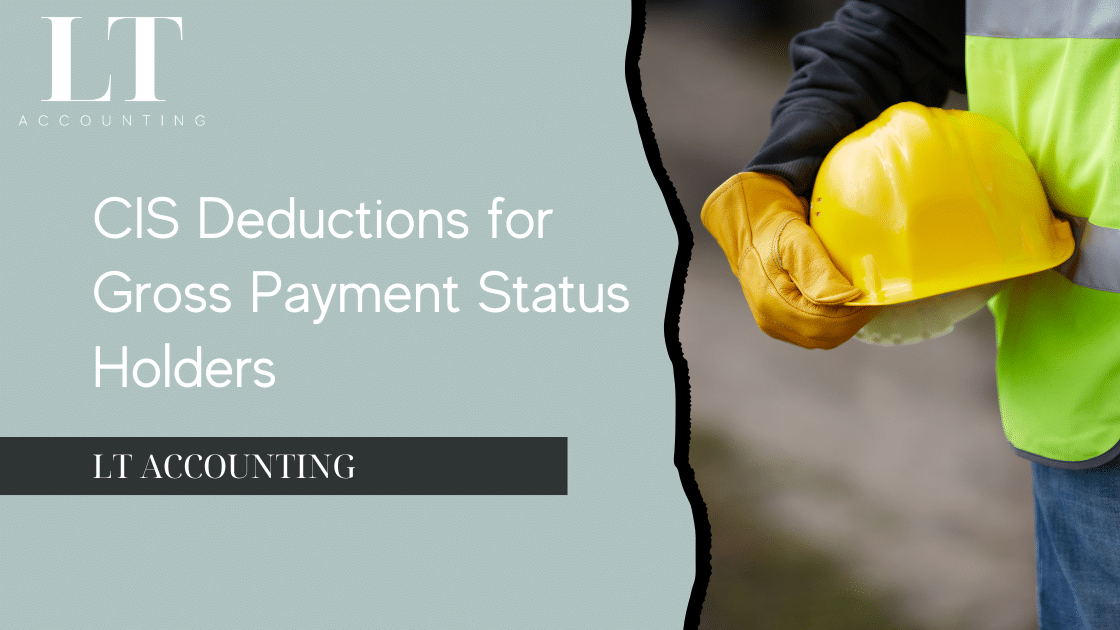For businesses operating in the UK construction sector, managing Construction Industry Scheme (CIS) obligations is a critical but often complex part of staying compliant with HMRC regulations. Whether you’re a contractor hiring subcontractors, or a subcontractor trying to ensure your tax deductions are accurate, navigating CIS tax calculations can feel like walking a tightrope — and one misstep can lead to significant financial penalties or disrupted cash flow.
CIS is a specialist area of UK tax legislation introduced by HMRC to monitor and regulate how payments to subcontractors in the construction industry are handled. Under the scheme, contractors are required to deduct money from a subcontractor’s payments and pass it on to HMRC. These deductions count as advance payments towards the subcontractor’s income tax and National Insurance.
While the scheme’s purpose is to reduce tax evasion in the construction industry, its practical application is far from straightforward. From verifying subcontractors to ensuring accurate deductions on labour vs. materials, the process is filled with potential pitfalls. Unfortunately, even small errors in CIS tax calculations can quickly snowball into compliance issues, disputes with subcontractors, or cash flow bottlenecks — none of which are good for business.
At LT Accounting, we regularly assist clients who have encountered issues with their CIS obligations, often after discovering that previous mistakes have cost them time, money, or goodwill. In many cases, these problems arise not from deliberate non-compliance but from simple misunderstandings or oversights that could have been prevented with the right guidance and support.
This article aims to shine a light on the most common mistakes businesses make when calculating CIS tax, and more importantly, how to avoid them. We’ll look at real-world examples, explain the rules in plain English, and show how outsourcing your CIS responsibilities to a knowledgeable accountancy firm — like LT Accounting — can save you hassle and reduce your risk of penalties.
Whether you’re new to CIS or have been managing it in-house for years, this guide will help you:
-
Understand the typical areas where businesses slip up
-
Learn the correct approach to CIS calculations
-
Stay on top of your obligations and avoid unnecessary fines
-
Discover how professional support can make compliance stress-free
This guide is designed for:
-
Contractors who hire subcontractors and are responsible for making CIS deductions and submitting monthly returns.
-
Subcontractors who want to ensure their deductions are correct and that their tax records reflect accurate payments.
-
Construction businesses of all sizes looking to streamline their tax and accounting processes and remain fully compliant with HMRC rules.
We’ll also highlight how LT Accounting’s specialist CIS return services can help you manage these obligations with confidence — from verifying subcontractors and calculating accurate deductions to filing returns on time and handling correspondence with HMRC.
Let’s start by briefly reviewing what CIS is and why it matters — before diving into the most frequent (and avoidable) mistakes made in CIS tax calculations.
Understanding CIS: A Quick Refresher
The Construction Industry Scheme (CIS) is a set of rules introduced by HM Revenue & Customs (HMRC) to regulate tax payments in the UK construction industry. While many contractors and subcontractors are familiar with the name, not everyone fully understands the breadth of its requirements — or how easy it is to get caught out by seemingly minor errors.
If you’re operating in the construction sector, whether as a sole trader, limited company, or partnership, chances are you fall within the scope of CIS. This quick refresher will explain the fundamentals of the scheme and establish a solid foundation before we explore the most common mistakes in CIS tax calculations.
What is CIS and Who Does It Apply To?
CIS applies to all businesses in the UK that work within the construction industry and make payments to subcontractors. This includes:
-
Main contractors who hire subcontractors to carry out construction work
-
Subcontractors providing labour or services within a construction project
-
Certain non-construction businesses that spend more than £3 million on construction in any 12-month period
The scheme covers a wide range of construction activities, including:
-
Site preparation (e.g., groundwork, demolition)
-
Building and structural alterations
-
Repairs, renovations, and decorating
-
Installation of systems such as heating, lighting, and ventilation
Importantly, the rules apply whether the work is carried out directly or through multiple layers of subcontracting — which is why clear understanding and meticulous record-keeping are essential.
Key Responsibilities for Contractors and Subcontractors
Contractors must:
-
Register with HMRC as a CIS contractor
-
Verify each subcontractor’s payment status (gross, standard, or higher rate)
-
Deduct tax at the correct rate (20% or 30%) from payments made to subcontractors (unless gross payment status applies)
-
Submit monthly CIS returns to HMRC detailing all payments and deductions
-
Provide subcontractors with deduction statements
-
Keep detailed records of all CIS transactions for at least three years
Subcontractors can:
-
Register for CIS to benefit from a 20% deduction rate instead of the default 30%
-
Apply for gross payment status, allowing them to receive payments in full without any deductions
-
Offset CIS deductions against their tax liability through self-assessment (sole traders) or corporation tax (limited companies)
How Are CIS Deductions Calculated?
CIS deductions are calculated on the labour portion of a subcontractor’s invoice. This is where many mistakes occur.
Here’s how it works:
-
If a subcontractor charges £2,000 for labour and £500 for materials (excluding VAT), the CIS deduction is applied only to the £2,000 labour cost.
-
If the subcontractor is registered and eligible for the standard rate, the contractor deducts 20% of the £2,000 (£400) and pays the subcontractor £2,100 (£2,000 labour + £500 materials – £400 CIS).
-
VAT should not be included in the CIS calculation and must be paid in full if the subcontractor is VAT registered.
It’s the contractor’s responsibility to ensure deductions are accurate and submitted correctly to HMRC. Subcontractors, meanwhile, need to monitor their deductions and ensure they match the statements provided to them.
Why This Matters
The consequences of non-compliance are serious:
-
Incorrect deductions can lead to disputes, especially if subcontractors believe they’ve been underpaid.
-
HMRC can impose substantial fines for inaccurate or late returns, failure to verify subcontractors, or poor record-keeping.
-
In some cases, businesses can be removed from the scheme or denied gross payment status, severely affecting cash flow.
For these reasons, understanding CIS and applying the rules correctly is essential for any business involved in construction. At LT Accounting, we help clients not only understand their obligations but also manage them accurately and efficiently, minimising the risk of costly errors.
Now that we’ve covered the basics, let’s dive into the most common mistakes businesses make when calculating CIS tax — starting with one of the biggest culprits: incorrect subcontractor verification.
Common Mistake #1: Incorrect Verification of Subcontractors
One of the most frequent and costly mistakes contractors make under the Construction Industry Scheme (CIS) is failing to properly verify subcontractors with HMRC. It might seem like an administrative formality, but getting this step wrong can trigger a domino effect of tax miscalculations, payment disputes, and HMRC penalties.
What Is Subcontractor Verification?
Before making any payments under CIS, contractors must verify each new subcontractor with HMRC to determine their tax treatment status. This verification process tells you which of the following deduction rates applies:
-
0% – Gross payment status: The subcontractor is paid in full, with no deduction.
-
20% – Standard deduction rate: Applies to registered subcontractors.
-
30% – Higher deduction rate: Applies to unregistered or incorrectly verified subcontractors.
Verification is carried out using HMRC’s online CIS services or commercial accounting software authorised by HMRC. You’ll need the subcontractor’s:
-
Unique Taxpayer Reference (UTR)
-
Legal business name (and trading name, if different)
-
National Insurance number (for sole traders) or Company Registration Number (for limited companies)
Once verified, HMRC will issue a verification number, which must be kept on file as proof that you’ve carried out the process correctly.
Common Errors in Verification
Despite its importance, verification is often rushed or misunderstood, especially by businesses handling CIS in-house without specialist support. Here are some of the most common mistakes:
❌ Assuming Previous Verifications Are Still Valid
HMRC requires verification only the first time you pay a subcontractor, but problems arise when businesses forget to verify new subcontractors or assume an old verification is still active for a subcontractor who has changed legal structure or UTR.
❌ Failing to Verify New Subcontractors
If you skip verification, HMRC assumes the subcontractor is unregistered — and you’ll be required to deduct 30% instead of 20%. This can cause serious issues for subcontractors expecting a smaller deduction, leading to disputes and damage to your working relationship.
❌ Entering Incorrect Details
Mistyping a UTR or company name can lead to HMRC rejecting the verification or assigning the wrong tax rate. This can be especially problematic when dealing with sole traders using trading names or limited companies with slightly different registered details.
❌ Not Keeping Records
Even if you verify correctly, failing to retain the verification number can cause issues during a tax inspection. HMRC expects contractors to maintain a clear audit trail, and missing verification records may lead to penalties or the need to reverify.
The Impact of Incorrect Verification
Getting verification wrong has real-world consequences:
-
Cash Flow Problems: Over-deducting means subcontractors receive less than expected, potentially putting their business in financial difficulty.
-
Administrative Burden: You may need to issue corrected statements or resubmit returns, taking up time and increasing the risk of further mistakes.
-
HMRC Penalties: Contractors can face fines for failing to verify or for applying the wrong rate without justification.
-
Loss of Trust: Subcontractors may be reluctant to work with contractors who consistently mismanage their tax deductions.
How LT Accounting Helps
At LT Accounting, we take the guesswork out of CIS verification. Whether you’re working with new subcontractors regularly or managing a long-standing team, we ensure:
-
All subcontractors are verified promptly and accurately
-
Verification records are maintained securely and compliantly
-
Deductions are made at the correct rate based on the most current information from HMRC
Our proactive support means you can focus on managing projects — not chasing verification numbers or handling disgruntled subcontractors.
Common Mistake #2: Misclassification of Labour and Materials
A particularly tricky area in CIS tax calculations — and one that frequently leads to over- or under-deductions — is incorrectly applying CIS deductions to materials. HMRC is clear: CIS tax should only be applied to the labour portion of a subcontractor’s invoice. But in practice, the line between labour and materials isn’t always as clear-cut as it seems.
Failing to correctly separate labour and materials can lead to excessive deductions (frustrating subcontractors and harming business relationships), or under-deductions (creating compliance issues and financial exposure for the contractor).
What the Rules Say
Under the Construction Industry Scheme:
-
Labour charges (i.e., the cost of construction work done) are subject to CIS tax deductions.
-
Materials costs (e.g., bricks, timber, cabling, fixtures) should be excluded from the deduction calculation if they are incurred directly by the subcontractor and used in delivering the contracted work.
-
VAT should never be included in the CIS calculation.
To illustrate:
-
A subcontractor issues an invoice for:
-
Labour: £1,500
-
Materials: £600
-
VAT: £420 (20%)
-
Total Invoice: £2,520
-
If the subcontractor is registered and subject to the standard 20% deduction rate, CIS applies only to the £1,500 labour, not the total invoice. That’s a £300 CIS deduction, not 20% of the full amount.
Common Errors in Labour vs. Materials Classification
Here are the key ways contractors get tripped up:
❌ Applying CIS to the Total Invoice Value
Some contractors mistakenly apply the deduction to the total figure (labour + materials), especially when the breakdown isn’t clearly itemised. This results in excessive deductions and requires corrections later — wasting time and potentially damaging subcontractor relations.
❌ Accepting Incomplete or Vague Invoices
Subcontractor invoices that simply list a total amount or include generic terms like “contract works” or “supply and fit” without a breakdown between labour and materials can’t be accurately processed for CIS. If no breakdown is provided, HMRC expects the full amount to be treated as labour — leading to higher deductions by default.
❌ Claiming Material Costs Without Proper Evidence
To exclude materials from the CIS calculation, contractors must be satisfied that the materials were genuinely purchased and used by the subcontractor for that specific job. Invoices or receipts should support this. If HMRC later challenges a claim and documentation is lacking, the contractor could be liable for underpaid tax.
❌ Misunderstanding What Qualifies as ‘Materials’
Some items, like plant hire, subcontractor expenses, or temporary site facilities, may not always count as ‘materials’ in HMRC’s eyes. Without a clear understanding, these can be wrongly excluded from deductions, leading to underpayments.
Real-World Example
Let’s say a subcontractor supplies and installs new windows:
-
Incorrect Approach: Contractor deducts 20% of the total invoice, including the cost of the windows and VAT.
-
Correct Approach: CIS deduction applies only to the labour element — the installation service — not the windows themselves.
A simple misunderstanding like this could lead to hundreds of pounds in over-deductions on a single job.
Best Practices for Contractors
To avoid mistakes in this area:
-
Require clear, itemised invoices separating labour, materials, and VAT
-
Maintain supporting evidence of materials purchases where needed
-
Avoid rounding or estimating the labour/material split — precision is key
-
Use accounting software that helps calculate and track deductions correctly
How LT Accounting Adds Value
At LT Accounting, we don’t just process numbers — we ensure your business is protected. We:
-
Review subcontractor invoices for compliance
-
Provide guidance on correct invoice structuring
-
Ensure CIS is calculated precisely based on the appropriate breakdown
-
Keep detailed records that can be used in the event of an HMRC enquiry
This not only improves your tax accuracy but also builds trust with your subcontractors — who are far more likely to continue working with a contractor who handles their payments correctly.
Common Mistake #3: Failing to Keep Adequate Records
When it comes to CIS compliance, good record-keeping isn’t just a best practice — it’s a legal requirement. Despite this, many contractors underestimate the importance of maintaining complete and accurate documentation. The result? Disorganisation, stress during HMRC inspections, and in some cases, financial penalties.
Failing to keep proper CIS records is one of the most preventable — yet most common — mistakes that businesses make.
What Records Are Required Under CIS?
HMRC requires contractors to retain detailed records for at least three years after the end of the tax year to which they relate. These records must show:
-
Subcontractor details: Name, UTR, National Insurance number or Company Registration Number, and verification number
-
Verification checks: Proof that each subcontractor was verified, including HMRC confirmation and applicable deduction rate
-
Payments made: Amounts paid to subcontractors, with dates and supporting documentation (e.g. invoices)
-
CIS deductions: Amounts deducted for each subcontractor, with detailed breakdowns
-
Monthly CIS returns: Copies of submitted returns and payment confirmations
-
Deduction statements: Monthly statements provided to subcontractors showing the amounts deducted
These records must be readily accessible and clearly organised, whether stored digitally or in paper format.
Common Record-Keeping Mistakes
Many contractors and construction businesses inadvertently fall foul of CIS regulations by making one or more of the following errors:
❌ Not Storing Verification Numbers
A verification number is issued by HMRC when you check a subcontractor’s tax status. Not recording this number (or failing to record it correctly) can invalidate the verification and leave you exposed during a compliance check.
❌ Mixing CIS with Other Accounts
Combining general bookkeeping and CIS records without proper segregation makes it difficult to retrieve information quickly — especially during an HMRC investigation.
❌ Forgetting to Issue Deduction Statements
It’s a legal requirement to provide subcontractors with a CIS deduction statement each month where deductions are made. Failing to do so is not only non-compliant but can also damage working relationships and lead to trust issues.
❌ Overreliance on Manual Spreadsheets
While spreadsheets can work for very small operations, they’re prone to human error and don’t provide the audit trail that HMRC prefers. Manual records can easily become corrupted or incomplete.
❌ Delaying Updates
Waiting until the end of the month (or later) to update records increases the risk of mistakes, forgotten transactions, or missed verifications. Real-time recording ensures greater accuracy and a smoother filing process.
Consequences of Poor Record-Keeping
Inadequate records can result in:
-
Fines and penalties from HMRC if you’re unable to support deductions or payment amounts
-
Rejected expense claims during tax assessments or investigations
-
Higher likelihood of audit failure or prolonged HMRC enquiries
-
Loss of gross payment status (if you’re a subcontractor yourself)
-
Unnecessary delays in preparing returns and tax submissions
For businesses that rely on subcontractor relationships, these outcomes can seriously disrupt cash flow, timelines, and operational stability.
Best Practices to Improve CIS Record-Keeping
To stay on the right side of HMRC:
-
Use dedicated accounting software or work with professionals like LT Accounting
-
Keep all records digitally backed up and easy to access
-
Set a monthly routine for reviewing and updating CIS records
-
Train staff (or site managers) involved in hiring subcontractors on what documentation is required
-
Provide deduction statements on time, every month, to every subcontractor you deduct from
How LT Accounting Simplifies Your Record-Keeping
When you outsource CIS compliance to LT Accounting, we:
-
Handle all verification and deduction tracking
-
Maintain compliant, audit-ready digital records for all CIS transactions
-
Automatically generate and send deduction statements to subcontractors
-
Provide real-time insights into your CIS liabilities and compliance status
This ensures peace of mind, reduces your admin burden, and guarantees that your CIS processes are robust, transparent, and fully compliant with HMRC expectations.
Common Mistake #4: Late or Inaccurate Monthly CIS Returns
The Construction Industry Scheme (CIS) places a firm obligation on contractors to submit monthly CIS returns to HMRC. These returns must detail all payments made to subcontractors and the deductions applied. While the process might seem routine, missing deadlines or submitting incorrect information can trigger automatic penalties, HMRC scrutiny, and avoidable administrative headaches.
Late or inaccurate CIS returns are among the most common — and easily preventable — mistakes made by contractors.
What Are CIS Monthly Returns?
CIS returns must be submitted monthly by the 19th of each month, covering payments made in the previous tax month (6th to the 5th). The return must include:
-
Subcontractor details (name, UTR, and verification status)
-
Total amount paid to each subcontractor
-
Amount of CIS tax deducted (if applicable)
-
Whether the contractor is a company or a sole trader
-
Confirmation that no payments were made (if applicable)
Even if no payments were made in a given month, a nil return still needs to be submitted.
The return must be accurate and complete, reflecting real payments and verified tax treatment. Any discrepancies may result in HMRC requesting clarification or initiating an investigation.
What Happens If You File Late or Incorrectly?
HMRC imposes strict penalties for late or incorrect submissions:
-
1 day late: £100 penalty
-
2 months late: £200 penalty
-
6 months late: £300 or 5% of CIS deductions (whichever is higher)
-
12 months late: £300 or 5% again — potentially increasing based on HMRC’s assessment
In addition to the financial penalties, late returns increase the likelihood of HMRC investigations, which can be time-consuming and reputationally damaging.
Incorrect returns (e.g. wrong deduction rates, missing subcontractors, or incorrect payment figures) may result in:
-
Additional penalties or interest charges
-
The need to resubmit corrected returns
-
Loss of gross payment status (if the contractor is also a subcontractor)
-
Frustrated subcontractors whose tax records don’t match their actual deductions
Why Do Mistakes Happen?
❌ Lack of Organisation
Contractors juggling site work, payments, and admin often leave CIS returns to the last minute — increasing the risk of oversight or missing the deadline entirely.
❌ Manual Processing
Relying on manual spreadsheets or non-specialist software makes it easier to miscalculate deductions or miss key fields in the return.
❌ Not Accounting for Nil Returns
Many contractors mistakenly believe that if they haven’t paid any subcontractors in a given month, they don’t need to file a return. In reality, a nil return is still mandatory and skipping it can trigger a penalty.
❌ No Review Process
Failing to double-check the figures before submission can result in errors that go unnoticed until HMRC flags them — by which point the penalties may already apply.
Best Practices for Accurate CIS Returns
To avoid these issues, contractors should:
-
Set reminders well ahead of the 19th monthly deadline
-
Keep detailed, up-to-date records of all subcontractor payments
-
Use HMRC-approved accounting software to generate returns
-
Perform internal checks before submission
-
Submit nil returns promptly if no payments were made
How LT Accounting Prevents Late or Inaccurate Submissions
With LT Accounting managing your CIS obligations:
-
Deadlines are never missed — we handle all returns on your behalf, accurately and on time
-
All data is verified before submission to ensure deductions and payments match your records
-
Nil returns are filed automatically when no subcontractor payments are due
-
You receive monthly reports and confirmation of submission for your records
We also help correct any historic errors and liaise with HMRC on your behalf, taking the stress and uncertainty out of your hands entirely.
Common Mistake #5: Over- or Under-Deducting Tax
In the world of CIS, calculating the right tax deduction is everything. Over-deduct and you risk cash flow issues and strained subcontractor relationships. Under-deduct and you could be liable for the shortfall — with interest and penalties from HMRC on top. Unfortunately, both scenarios happen more often than you might expect, especially when relying on manual calculations or incomplete information.
This section explores why over- and under-deductions occur, the implications for contractors and subcontractors, and how to get your CIS tax calculations right every time.
Understanding CIS Deduction Rates
Under the CIS, subcontractors fall into three categories, each with a different deduction rate:
-
Gross payment status – 0% deduction (subcontractors are paid in full)
-
Standard rate – 20% deduction (applies to registered subcontractors)
-
Higher rate – 30% deduction (for unverified or unregistered subcontractors)
It is the contractor’s legal responsibility to apply the correct deduction rate, based on HMRC verification. But applying the wrong rate — whether by oversight or a clerical error — is surprisingly common.
Why Over- or Under-Deductions Happen
❌ Incorrect or Missed Verification
Failing to verify a subcontractor before payment results in the automatic application of the 30% deduction rate. If the subcontractor is actually registered and should only have 20% deducted, this constitutes an over-deduction, which the subcontractor must reclaim via self-assessment — a time-consuming and frustrating process.
❌ Assuming Gross Status Without Proof
Some contractors mistakenly believe a subcontractor has gross status based on verbal confirmation or past relationships. If HMRC doesn’t confirm this during verification, and you fail to apply a deduction, you’ve just made an under-deduction — and you, the contractor, are liable for the unpaid tax.
❌ Applying CIS to VAT or Materials
As previously discussed, CIS should be applied only to the labour portion of an invoice, excluding materials and VAT. Applying deductions to the total amount is an over-deduction and can cause both accounting discrepancies and subcontractor frustration.
❌ Manual Errors
Manual calculations or spreadsheet inputs are prone to simple errors:
-
Rounding incorrectly
-
Typing the wrong figure
-
Applying deductions to gross instead of net values
These can all lead to incorrect deductions and misreporting on CIS returns.
❌ Incorrect Treatment of Mixed-Status Subcontractors
Some subcontractors operate under different legal structures across different jobs or projects (e.g., sole trader on one job, limited company on another). Not updating your records for each engagement can result in applying the wrong deduction rate.
The Risks and Consequences
Getting CIS deductions wrong can lead to:
-
Financial exposure: If you under-deduct, HMRC will expect you to make up the difference — even if you’ve already paid the subcontractor
-
Damaged relationships: Over-deductions harm subcontractor cash flow and may discourage them from working with you again
-
Tax reporting issues: Mismatched figures on deduction statements vs. HMRC records can trigger audits or queries
-
Loss of reputation: Contractors with a track record of mismanaging CIS may struggle to attract quality subcontractors
How to Get It Right
To avoid these errors:
-
Always verify subcontractors before their first payment
-
Keep records of verification numbers and HMRC confirmation
-
Use accounting software or a qualified accountant to calculate deductions
-
Double-check whether gross payment status is still valid, as it can change
-
Reverify subcontractors if there are any changes to their structure or HMRC flags an issue
How LT Accounting Ensures Accurate Deductions
At LT Accounting, our CIS specialists ensure that:
-
Subcontractors are correctly verified and classified
-
The correct deduction rate is applied on every invoice
-
Labour, materials, and VAT are accurately separated
-
Deductions are calculated using reliable, HMRC-compliant tools
-
Monthly statements reflect accurate figures and reduce the risk of disputes
Our proactive approach protects your business from penalties, keeps subcontractors happy, and ensures full compliance with every monthly CIS return.
Common Mistake #6: Ignoring Changes in Subcontractor Status
While many contractors understand the importance of verifying subcontractors at the start of a working relationship, a lesser-known but equally crucial step is monitoring and responding to changes in subcontractor status. Ignoring these changes can lead to incorrect tax deductions, discrepancies in your CIS returns, and potential compliance issues with HMRC.
Subcontractors can shift between gross payment status and standard rate, or their business structure may change entirely — and if your records aren’t updated accordingly, you could be making deductions (or failing to) based on outdated information.
How Subcontractor Status Can Change
There are several scenarios where a subcontractor’s status may change, and each one can affect how you calculate CIS tax:
🔄 Loss of Gross Payment Status
Subcontractors with gross payment status are paid in full, with no tax deducted. However, HMRC reviews gross status annually, and if a subcontractor fails to meet criteria — such as submitting tax returns on time, paying tax liabilities, or meeting turnover thresholds — they can lose that status.
If they lose gross status and you’re not aware, continuing to pay them gross means you’re under-deducting, and HMRC will hold you liable for the shortfall.
🔄 Becoming Registered for CIS
A subcontractor who initially had a 30% deduction rate because they weren’t registered may later register and qualify for the 20% standard rate. If you don’t reverify their new status, you might continue deducting too much, causing over-deductions and potential subcontractor dissatisfaction.
🔄 Change in Legal Structure
If a subcontractor transitions from a sole trader to a limited company, or vice versa, their UTR and verification status change. You must treat this as a new subcontractor and reverify accordingly. Failure to do so means applying deductions under the wrong credentials — and any CIS return filed with incorrect details may be flagged by HMRC.
🔄 Mismatches in HMRC Records
Sometimes, HMRC may update a subcontractor’s status due to administrative reasons, errors, or after correspondence. If your records don’t reflect these changes, you could be working with outdated verification data — and this could come back to bite you during an inspection or audit.
Why This Mistake Happens
❌ Assuming Verification is a One-Off Task
Contractors often verify subcontractors once at the start and assume that status remains static. While that may be true in many cases, it isn’t guaranteed.
❌ No Reverification Process
Most businesses don’t have a built-in process for checking or refreshing verification details, particularly for subcontractors they’ve worked with for years.
❌ Poor Communication
Subcontractors may not inform contractors when their circumstances change, especially if they’re unaware of how it impacts CIS deductions.
Consequences of Ignoring Status Changes
-
Under-deductions: Paying subcontractors gross when their status has changed to standard or higher rate
-
Over-deductions: Continuing to deduct 30% when they’ve become registered and verified
-
Incorrect CIS Returns: HMRC may identify inconsistencies between what they have on file and what you submit
-
Disputes: Subcontractors may challenge your deduction practices, particularly if over-deducted
-
HMRC Penalties: You may be required to make up underpaid tax and face fines for non-compliance
Best Practices to Stay Up to Date
To avoid this common trap:
-
Reverify subcontractors periodically, especially ahead of long-term projects or financial year-end
-
Maintain a log of verification dates and review it quarterly or biannually
-
Encourage subcontractors to communicate any changes in status, business structure, or UTR
-
Use accounting software or work with professionals who can monitor CIS compliance in real-time
-
Build a standard process for reverification when new jobs or contracts begin
How LT Accounting Keeps Your Subcontractor Records Accurate
At LT Accounting, we take CIS management a step further by:
-
Tracking subcontractor status changes proactively
-
Setting up scheduled reverification processes
-
Ensuring your records reflect the most up-to-date information from HMRC
-
Protecting your business from penalties linked to under- or over-deductions
Whether you’re managing a small crew or dozens of subcontractors, we ensure you never get caught off-guard by changes that can lead to costly errors.
How LT Accounting Helps You Stay CIS Compliant
Managing Construction Industry Scheme (CIS) responsibilities is far more than just a monthly task — it’s an ongoing compliance commitment that demands accuracy, organisation, and up-to-date knowledge of HMRC rules. Many contractors find that juggling site work, cash flow, and subcontractor relationships leaves little room for error-free CIS admin.
That’s where LT Accounting comes in.
As CIS specialists, we help construction businesses of all sizes navigate the complexities of CIS returns and deductions — so you stay compliant, efficient, and stress-free. Here’s how we do it.
1. End-to-End CIS Return Management
We take full responsibility for managing your monthly CIS returns:
-
Submitting returns on time to HMRC — every month, without fail
-
Preparing nil returns where required
-
Generating and distributing deduction statements to subcontractors
-
Reconciling CIS deductions against your overall tax liabilities
You’ll never have to worry about late submissions or missed filings again.
2. Subcontractor Verification Done Right
We handle all subcontractor verifications with HMRC, ensuring you apply the correct deduction rate from day one. Our verification process includes:
-
Checking and recording all UTRs and business information
-
Obtaining and storing official verification numbers
-
Monitoring changes in subcontractor status
-
Reverification where required
This helps you avoid over-deductions, under-deductions, and the penalties that come with them.
3. Accurate CIS Calculations and Invoice Review
Our team reviews your subcontractor invoices to ensure CIS is applied:
-
Only to the labour portion (excluding materials and VAT)
-
Using the correct rate based on up-to-date verification
-
In line with HMRC rules on mixed work, plant hire, and expenses
We work directly with you or your subcontractors to correct invoice formatting and improve clarity — saving you time and preventing disputes.
4. Real-Time Record-Keeping and Reporting
We maintain secure, digital records of:
-
All CIS deductions and payments
-
Verification numbers and subcontractor details
-
HMRC submission confirmations
-
Monthly summaries for internal reporting or year-end accounting
These records are ready for HMRC inspection and ensure you’re fully audit-proof.
5. Expert Support During HMRC Reviews or Disputes
If HMRC raises a query or requests information about your CIS returns, LT Accounting acts on your behalf. We:
-
Communicate directly with HMRC to resolve issues
-
Amend or correct any previous returns if needed
-
Provide documentation to defend your compliance
This support gives you peace of mind and minimises disruption to your business.
6. Integration with Broader Accounting Services
Because we offer a full range of services — including bookkeeping, payroll, VAT, and year-end accounts — we can integrate your CIS processes into your wider financial picture. This allows us to:
-
Offset CIS deductions against PAYE and other liabilities
-
Ensure subcontractor payments are properly reconciled
-
Help you plan cash flow based on real-time tax forecasting
CIS doesn’t operate in a vacuum — and neither do we.
Why Choose LT Accounting?
✅ CIS Expertise – We specialise in the construction industry and know the ins and outs of HMRC’s CIS requirements.
✅ Customised Support – Whether you’re a one-man operation or a growing construction firm, we tailor our service to your needs.
✅ Digital Efficiency – We use modern, cloud-based systems to streamline submissions, keep accurate records, and ensure real-time insights.
✅ Dedicated Team – You’ll have a point of contact who understands your business and is on hand to answer questions and keep you compliant.
Conclusion: Avoid CIS Pitfalls with Expert Support
The Construction Industry Scheme is a vital part of the UK tax system for the construction sector — but it’s also one of the most misunderstood. From incorrect subcontractor verification to poor record-keeping and misapplied deductions, even minor oversights in your CIS process can lead to major consequences.
Let’s recap the most common CIS tax calculation mistakes:
-
Failing to verify subcontractors correctly, leading to incorrect deduction rates
-
Applying deductions to materials or total invoice values, rather than labour alone
-
Poor record-keeping that doesn’t meet HMRC’s legal requirements
-
Filing returns late or with inaccurate data
-
Over- or under-deducting tax due to human error or outdated status checks
-
Ignoring changes in subcontractor status, resulting in non-compliance
Each of these errors not only puts your business at risk of penalties and HMRC scrutiny, but also damages your reputation with subcontractors and disrupts your day-to-day operations.
That’s why smart contractors partner with professionals who understand the scheme inside and out.
Why LT Accounting is Your Trusted CIS Partner
At LT Accounting, we provide expert CIS return services tailored to UK contractors and construction businesses. Whether you’re just starting out or managing dozens of subcontractors across multiple projects, we’ll help you:
-
Stay on top of CIS obligations
-
Avoid costly mistakes and penalties
-
Maintain accurate, audit-ready records
-
Build confidence with your subcontractors
-
Free up your time to focus on delivering quality work
With our support, CIS compliance becomes a strength — not a stress.
Take the Next Step Towards Compliance and Confidence
If you’re worried about past mistakes, unsure about your current processes, or simply ready to take CIS off your plate, get in touch with LT Accounting today.
✅ Book a free consultation
✅ Ask us about a CIS compliance check-up
✅ Let us take care of your monthly returns, verifications, and statements
We’re here to help you build with confidence — knowing your CIS obligations are being handled with the care and precision they demand.






